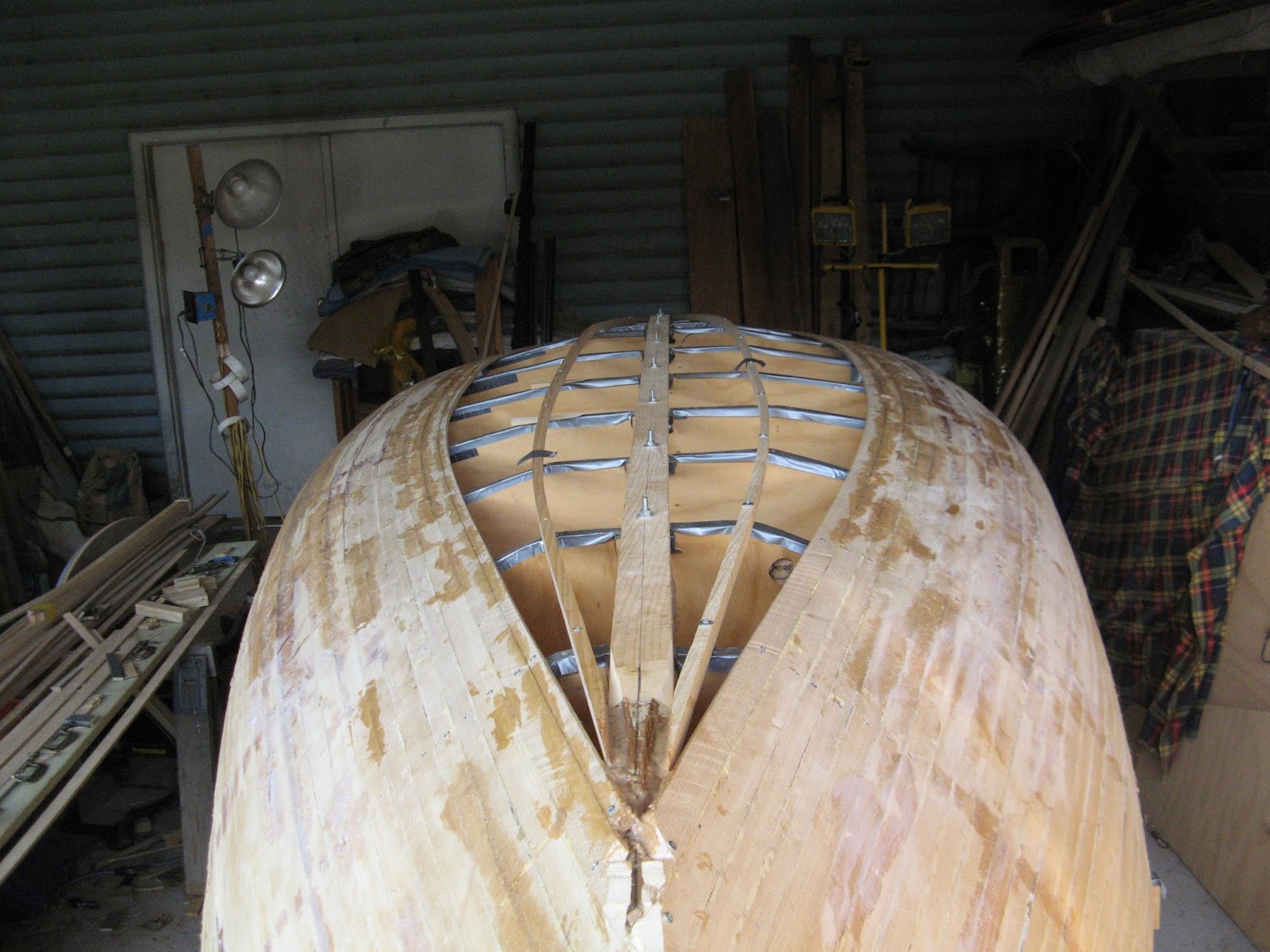July 2013
Today, July 3rd I started the arduous process of removing
all the foamed spongy gorilla glue that I had used to temporarily hold the
strips together. I used a very sharp #2 gouge to slice off the foamed glue and
it came off quite easily. Once all the foamed glue is removed it will be time
to sand the inside of the hull to remove all traces of the glue and to assist
in leveling the inside surface. All voids will be filled with thickened epoxy
to both tighten the hull and form a uniform smooth surface. Today, July 21, 2013 I sanded the interior to
the hull with my 6 inch sander/grinder with a 50 grit disc. This is a dusty,
hot, backbreaking job and one of the pitfalls of boat building. I hate sanding
but it must be completed if I want a fair and uniform interior hull on the
boat. And to make matters worse it was 92 degrees today but fortunately we
didn’t have too much humidity. Once I finished this job it was time for a
shower, an adult beverage and a nap.
After dinner I started to fill all the crevices, screw holes and uneven
strips with my epoxy sanding dust mixture. On and off over the next 23 days I continued
to sand and fill those spots that were uneven in the hull. Once all the
crevices were filled I applied a sealer coat of epoxy to the entire hull. The
sealer coat does several things; first it fills the grain on all the wood in
the hull and second it acts as a sealer to prevent moisture entering the wood
prior to the fiber glassing process. Overall
I used 112 oz. of resin and 56 oz. of hardener to complete the fairing/sealing
process. After one month of sanding/epoxy filling I decided I needed a break so
I started making the deck beams.



















